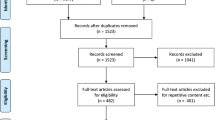Abstract
Purpose
We investigated the incidence and distribution of post-mortem gas detected with multidetector computed tomography (MDCT) to identify factors that could distinguish artifactual gas from cardiac air embolism.
Material and methods
MDCT data of 119 cadavers were retrospectively examined. Gas was semiquantitatively assessed in selected blood vessels, organs, and body spaces (82 total sites).
Results
Seventy-four of the 119 cadavers displayed gas (62.2%; CI 95% 52.8–70.9), and 56 (75.7%) displayed gas in the heart. Most gas was detected in the hepatic parenchyma (40%), right heart (38% ventricle, 35% atrium), inferior vena cava (30% infrarenally, 26% suprarenally), hepatic veins (26% left, 29% middle, 22% right), and portal spaces (29%). Male cadavers displayed gas more frequently than female cadavers. Gas was detected 5–84 hours after death; therefore, the post-mortem interval could not reliably predict gas distribution (rho = 0.719, p < 0.0001). We found that a large amount of putrefaction-generated gas in the right heart was associated with aggregated gas bubbles in the hepatic parenchyma (sensitivity = 100%, specificity = 89.7%). In contrast, gas in the left heart (sensitivity = 41.7%, specificity = 100%) or in periumbilical subcutaneous tissues (sensitivity = 50%, specificity = 96.3%) could not predict gas due to putrefaction.
Conclusion
This study is the first to show that the appearance of post-mortem gas follows a specific distribution pattern. An association between intracardiac gas and hepatic parenchymal gas could distinguish between post-mortem-generated gas and vital air embolism. We propose that this finding provides a key for diagnosing death due to cardiac air embolism.






Similar content being viewed by others
References
O’Donnell C, Woodford N (2008) Post-mortem radiology–a new sub-speciality? Clin Radiol 63(11):1189–1194
O’Donnell C, Rotman A, Collett S, Woodford N (2007) Current status of routine post-mortem CT in Melbourne, Australia. Forensic Sci Med Pathol 3(3):226–232
Losasso TJ, Muzzi DA, Dietz NM, Cucchiara RF (1992) Fifty percent nitrous oxide does not increase the risk of venous air embolism in neurosurgical patients operated upon in the sitting position. Anesthesiology 77(1):21–30
Papadopoulos G, Kuhly P, Brock M, Rudolph KH, Link J, Eyrich K (1994) Venous and paradoxical air embolism in the sitting position. a prospective study with transoesophageal echocardiography. Acta Neurochir 126(2–4):140–143
Palmon S, Moore L, Lundberg J, Toung T (1997) Venous air embolism: a review. J Clin Anesth 9(3):252–257
Muth C, Shank E (2000) Gas embolism. N Engl J Med 342(7):476–482
Tan B, Saunier C, Cotton F, Gueugniaud P, Piriou V (2008) Thoracoabdominal CT scan: a useful tool for the diagnosis of air embolism during an endoscopic retrograde cholangiopancreatography. Ann Fr Anesth Rèanim 27(3):240–243
Helmberger TK, Roth U, Empen K (2002) Massive air embolism during interventional laser therapy of the liver: successful resuscitation without chest compression. Cardiovasc Interv Radiol 25(4):335–336
Grabherr S, Lesta MDM, Rizzo E, Mangin P, Bollmann M (2008) Forensic imaging. Rev Méd Suisse 4(164):1609–1614
Bolliger SA, Thali MJ, Ross S, Buck U, Naether S, Vock P (2008) Virtual autopsy using imaging: bridging radiologic and forensic sciences. a review of the Virtopsy and similar projects. Eur Radiol 18(2):273–282
Paperno S, Riepert T, Krug B, Rothschild MA, Schultes A, Staak M, Lackner L (2005) Value of postmortem computed tomography in comparison to autopsy. Rofo 177(1):130–136
Payne-James J (2003) Forensic medicine: clinical and pathological aspects. Greenwich Medical Media, San Francisco
Aghayev E, Yen K, Sonnenschein M, Jackowski C, Thali M, Vock P, Dirnhofer R (2005) Pneumomediastinum and soft tissue emphysema of the neck in postmortem CT and MRI; a new vital sign in hanging? Forensic Sci Int 153(2–3):181–188
Dirnhofer R, Jackowski C, Vock P, Potter K, Thali MJ (2006) VIRTOPSY: minimally invasive, imaging-guided virtual autopsy. Radiographics 26(5):1305–1333
Thali MJ, Jackowski C, Oesterhelweg L, Ross SG, Dirnhofer R (2007) VIRTOPSY–the Swiss virtual autopsy approach. Leg Med (Tokyo) 9(2):100–104
Jackowski C, Thali M, Sonnenschein M, Aghayev E, Yen K, Dirnhofer R, Vock P (2004) Visualization and quantification of air embolism structure by processing postmortem MSCT data. J Forensic Sci 49(6):1339–1342
Shiotani S, Kohno M, Ohashi N, Atake S, Yamazaki K, Nakayama H (2005) Cardiovascular gas on non-traumatic postmortem computed tomography (PMCT): the influence of cardiopulmonary resuscitation. Radiat Med 23(4):225–229
Kauczor HU, Riepert T, Wolcke B, Lasczkowski G, Mildenberger P (1995) Fatal venous air embolism: proof and volumetry by helical CT. Eur Radiol 21:155–157
Frey S (1929) Luftembolie. Ergeb Chir 22:95–161
Bajanowski B, West A, Brinkmann B (1998) Proof of fatal air embolism. Int J Leg Med 111(4):208–211
Mercier L (1837) Observation sur l'introduction de l'air dans les veines et sur la manière dont il produit la mort. Gaz Med 5:481–487
Dyrenfurth F (1924) Zur Technik der Feststellung des Todes an Luftembolie. Dtsch Z Gerichtl Med 3:145–146
Jackowski C, Sonnenschein M, Thali MJ, Aghayev E, Yen K, Dirnhofer R, Vock P (2007) Intrahepatic gas at postmortem computed tomography: forensic experience as a potential guide for in vivo trauma imaging. J Trauma 62(4):979–988
Brinkmann B (2003) Handbuch gerichtliche Medizin. Springer, Berlin
Acknowledgments
The authors would like to thank Professor Richard Dirnhofer for his experienced assistance.
Author information
Authors and Affiliations
Corresponding author
Electronic Supplementary Material
Below is the link to the electronic supplementary material.
(WMV 1034 kb)
Rights and permissions
About this article
Cite this article
Egger, C., Bize, P., Vaucher, P. et al. Distribution of artifactual gas on post-mortem multidetector computed tomography (MDCT). Int J Legal Med 126, 3–12 (2012). https://doi.org/10.1007/s00414-010-0542-5
Received:
Accepted:
Published:
Issue Date:
DOI: https://doi.org/10.1007/s00414-010-0542-5




